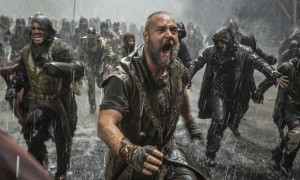SKY CAPTAIN AND THE CINEMA OF ATTRACTIONS
I’m not someone who disses movies for being principally vehicles for special effects. The “Lookee what we can do!” impulse is one of the tings that defines the art form which is inseparable from advances in technology. Virginia Wolfe said that there could never really be a mature film criticism, because the medium kept changing so fast that there were no standards of comparison.
What I do object to, is boring the audience by being self-indulgent with the special effects and trying to make the impressions they create last for the duration of a two-hour movie. For non-computer geeks, the impact of the effects in the recent release Sky Captain really only lasts for about forty-five minutes. After that, it is all the same stuff over and over. Picture yourself on even the coolest new roller coaster for forty-five minutes. Once you done it, you’ve done it. The thrill is so much in the newness of it.
Inexcusably, Sky Captain has nothing to hold the viewer’s brain and emotions once the CGI attractions wear thin. The plot holes in the story are big enough to drop a fifteen story steel robot through. The characters have no arc. No one changes or grows. So, by the usual definition, there’s no drama here.
By way of dubious achievement, Sky Captain could be considered the first film that is purely a vehicle for CGI, which is served by the human actors – Oscar winners Gywnneth, Jude and Angelina. That is, we generally disdain movies that are pure “star vehicles.” This is a movie that “uses” human actors to serve the effects. It would be fascinatingly icky, if it wasn’t a complete failure as entertainment.
[FADE IN, SEPIA] Pass, Dex.











